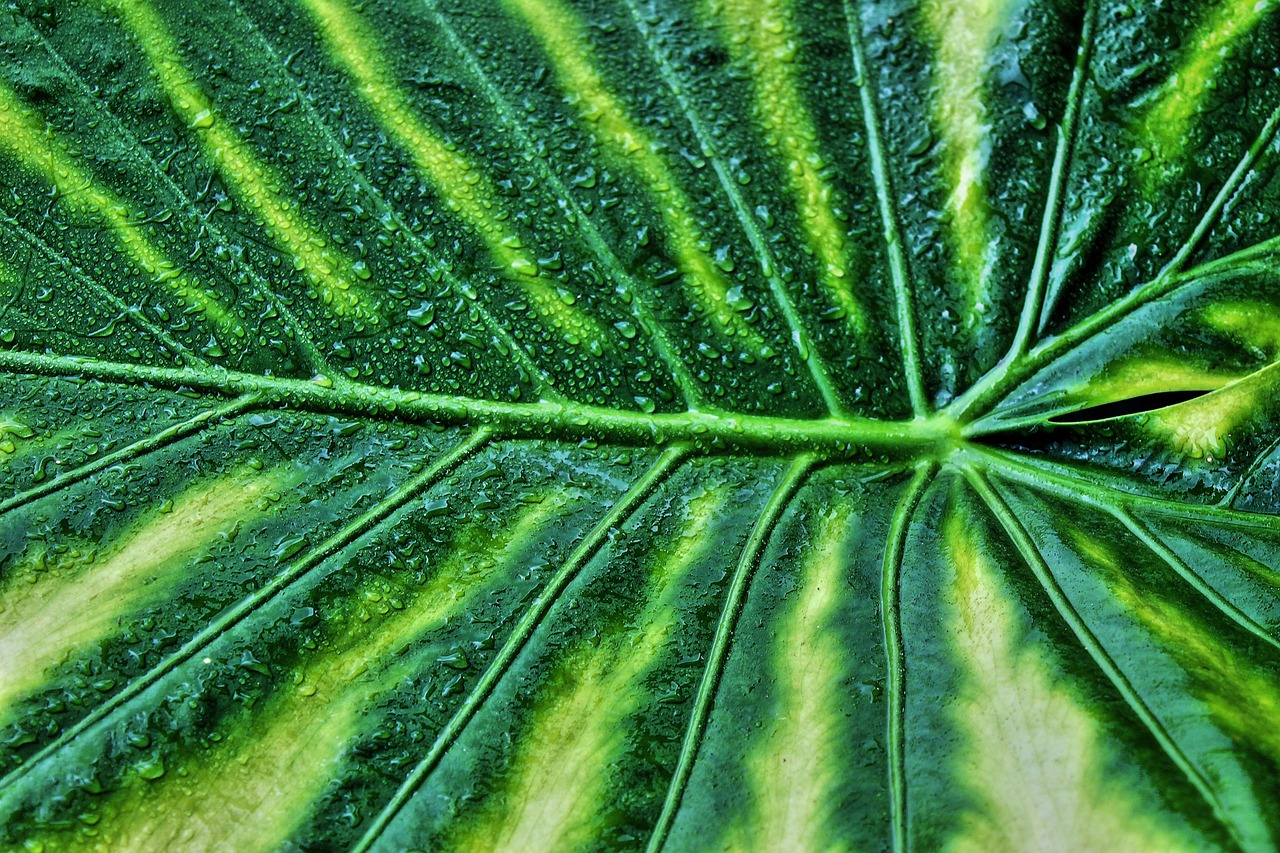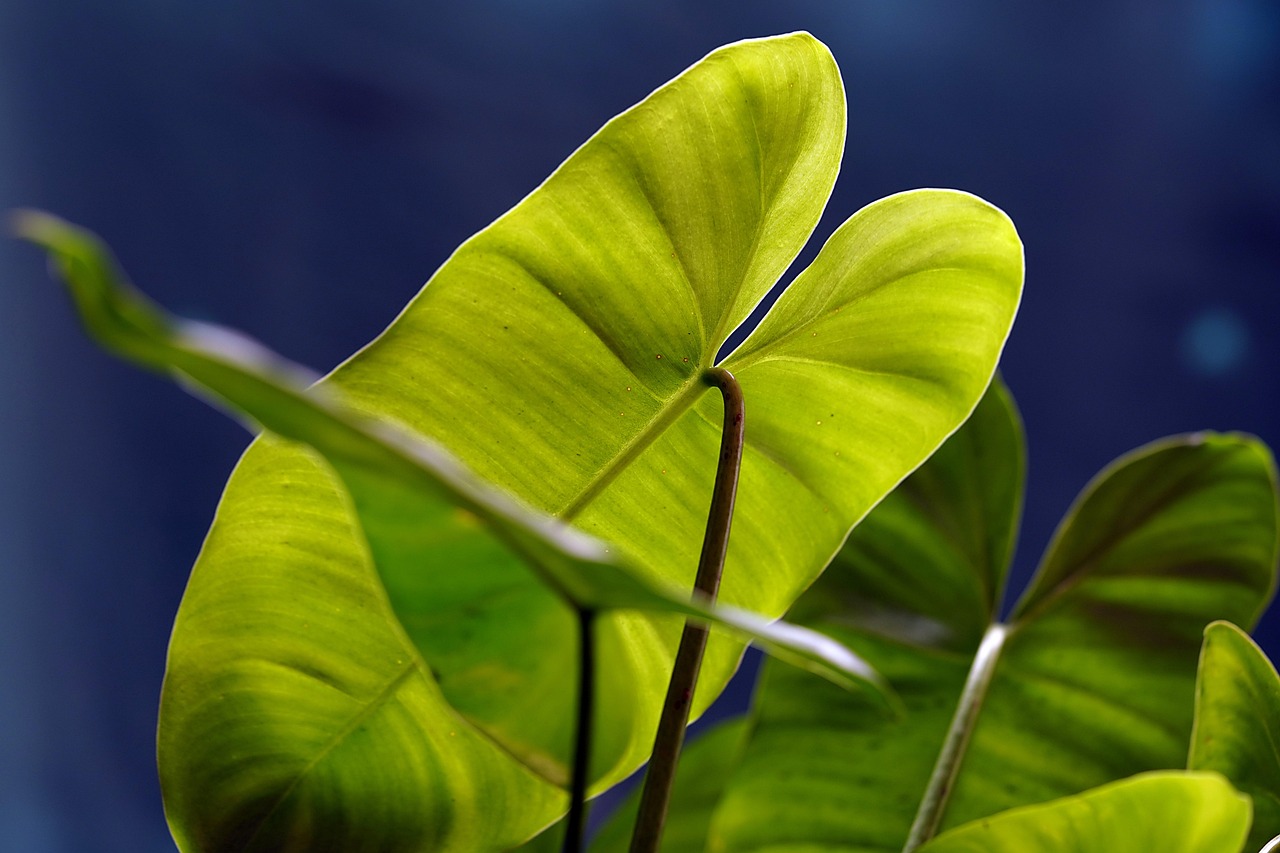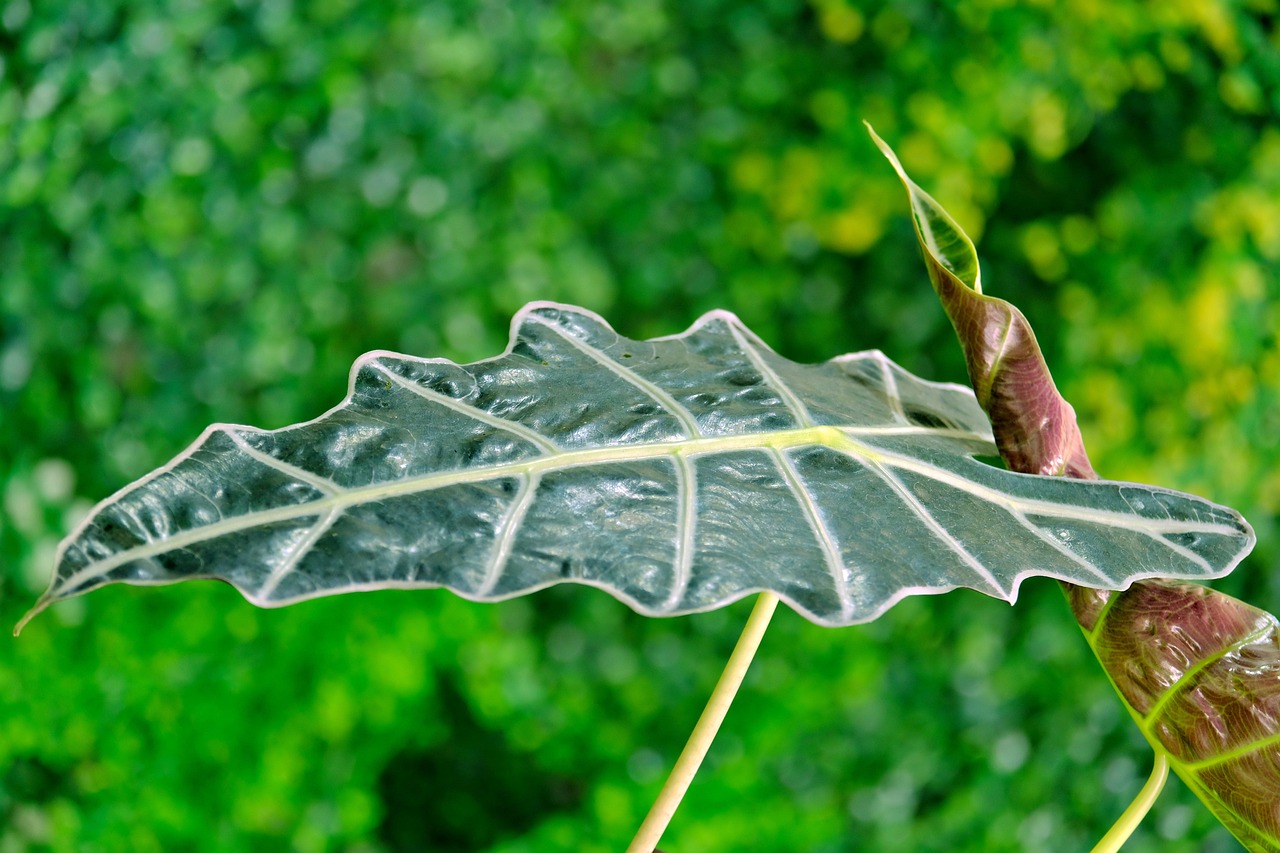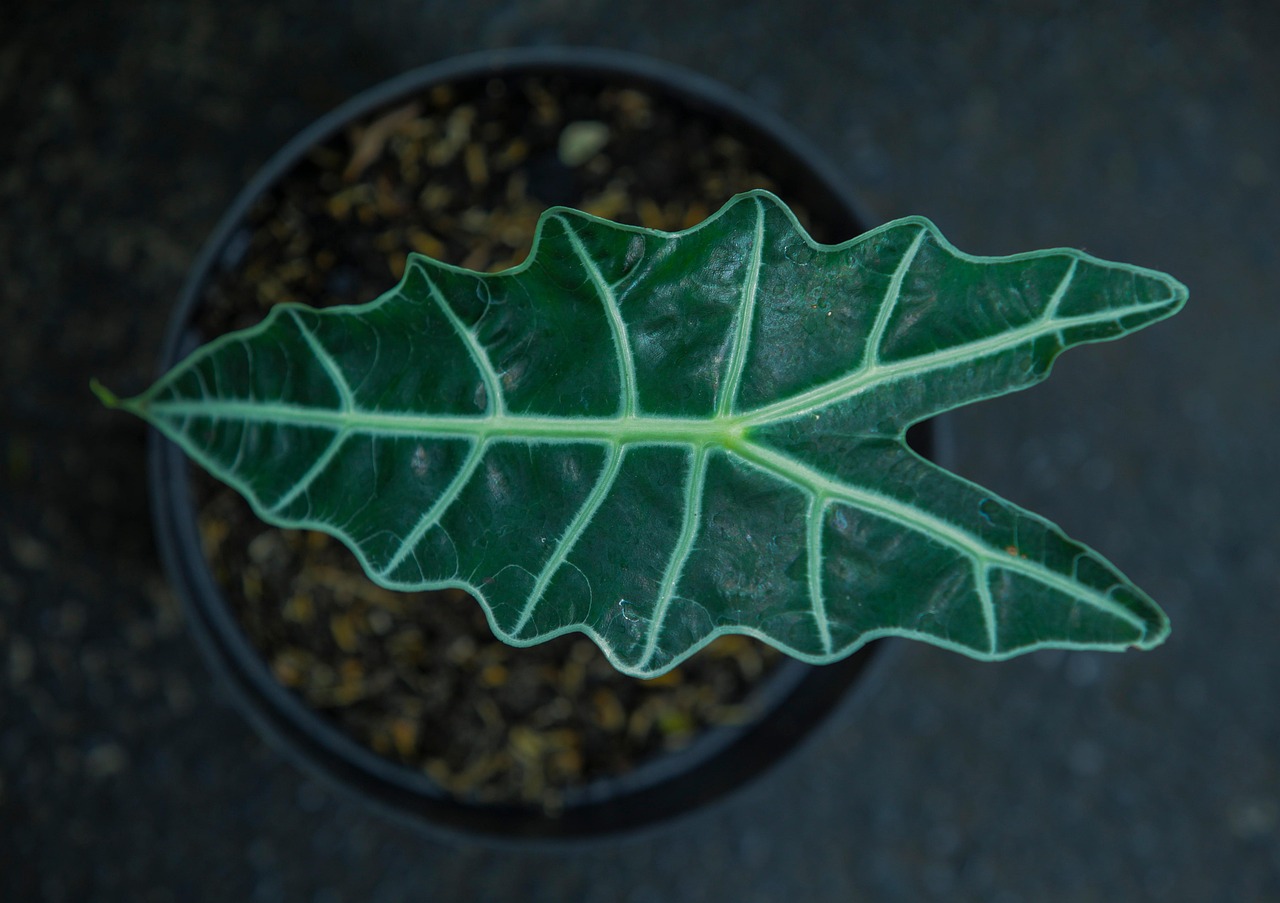Alocasia Frydek, known for its striking green leaves and white veins, requires consistent care. To maintain a healthy plant, ensure proper lighting, humidity, and watering practices. Regularly check for pests and adjust fertilization as the seasons change.
Understanding Alocasia Frydek

Alocasia Frydek is a tropical plant that belongs to the Araceae family. Native to Southeast Asia, it is often admired for its unique foliage. The leaves are arrow-shaped, featuring deep green colors contrasted by prominent white veins. This striking appearance has made it a popular choice among houseplant enthusiasts.
In addition to its aesthetic appeal, Alocasia Frydek is also relatively easy to care for if the proper conditions are met. Understanding its native habitat can significantly aid in replicating the ideal environment at home. These plants thrive in warm, humid places with bright indirect light. Replicating these conditions will help ensure your Alocasia remains healthy and vibrant.
Environmental Requirements
To successfully maintain an Alocasia Frydek, it is essential to understand its environmental needs. Here are the critical factors to consider:
| Factor | Ideal Conditions |
|---|---|
| Light | Bright, indirect sunlight |
| Temperature | 65°F to 80°F (18°C to 27°C) |
| Humidity | 60% or higher |
| Watering | Moderate; keep soil moist but not soggy |
Light Requirements
Light is one of the most crucial factors in maintaining your Alocasia Frydek. This plant prefers bright, indirect sunlight. Direct sunlight can scorch its leaves, leading to damage. A spot near a window with filtered light or a few feet away from a bright window is ideal.
If you notice that the leaves are stretching toward the light source, your plant may not be receiving enough light. In contrast, if the leaves show signs of browning or burning, consider relocating it to a less intense light area.
Temperature and Humidity
Alocasia Frydek thrives in warm temperatures. Keeping the plant in an environment between 65°F and 80°F is ideal. Be cautious of sudden temperature changes or drafts, which can stress the plant and hinder its growth.
Humidity plays a significant role in the health of Alocasia Frydek. This tropical plant enjoys high humidity levels, ideally around 60% or higher. If your home has low humidity, consider using a humidifier or placing a tray of water near the plant to increase moisture levels.
Watering Practices
Watering should be approached with care. Alocasia Frydek likes its soil to be kept consistently moist but not soggy. Overwatering can lead to root rot, while underwatering can cause the leaves to wilt and turn yellow. A good practice is to water when the top inch of soil feels dry.
When you water, ensure that excess water can drain out of the pot to prevent standing water at the bottom. This will promote healthy root development and overall plant vitality.
Soil and Potting
The choice of soil and potting is crucial for the health of your Alocasia Frydek. This plant thrives in a well-draining soil mix that retains moisture without becoming waterlogged. An ideal soil mix for Alocasia Frydek would include a combination of organic matter and aerating materials.
Here are some recommended components to consider when creating or choosing a soil mix:
- Peat Moss: Retains moisture while providing essential nutrients.
- Coconut Coir: Offers good drainage and aeration.
- Pine Bark: Helps improve drainage and adds structure to the soil.
- Perlite or Vermiculite: Increases aeration and prevents soil compaction.
When potting your Alocasia Frydek, choose a pot with drainage holes. This will help prevent standing water, which can lead to root rot. A pot that is too large can hold excess moisture, so select one that is just slightly larger than the root ball.
Fertilization
Fertilization is an essential part of Alocasia Frydek maintenance. During the growing season, typically spring and summer, your plant will benefit from regular feeding. A balanced liquid fertilizer diluted to half-strength can promote healthy growth.
Consider these tips for fertilizing your Alocasia Frydek:
- Frequency: Fertilize every 4 to 6 weeks during the growing season.
- Type: Use a balanced fertilizer (N-P-K ratio of 20-20-20) or one formulated for houseplants.
- Watering: Always water your plant before applying fertilizer to avoid root burn.
- Winter Care: Reduce or stop fertilization during the dormant season in fall and winter.
Pest Management
Like many houseplants, Alocasia Frydek can be susceptible to pests. Regular monitoring is essential to catch any infestations early. Common pests include spider mites, aphids, and mealybugs.
If you notice any signs of pests such as webbing, sticky residue, or visible insects on the leaves, take action promptly. Here are some effective strategies for managing pests:
- Inspect Regularly: Check the undersides of leaves and stems frequently for pests.
- Natural Remedies: Use a mixture of water and mild soap to wipe down the leaves and deter pests.
- Pesticides: If the infestation is severe, consider using neem oil or insecticidal soap as a targeted treatment.
- Isolation: If you find pests on one plant, isolate it to prevent spreading to other plants.
Leaf Care and Maintenance
The leaves of Alocasia Frydek are its most attractive feature. To keep them looking their best, regular cleaning and care are necessary. Dust can accumulate on the leaves, blocking sunlight and hindering photosynthesis.
Follow these steps for proper leaf care:
- Wipe Leaves: Use a damp cloth to gently wipe the leaves once every few weeks.
- Avoid Leaf Shine Products: These can clog pores and create buildup on the leaves.
- Monitor for Damage: Regularly check for yellowing or browning edges, which can indicate improper watering or nutrient issues.
Propagation Techniques
If you’re looking to expand your collection or share your Alocasia Frydek, propagation is an exciting option. There are several methods for propagating this plant, but the most common is through division.
T

he best time to propagate is during the growing season when the plant is healthy and actively growing. Here’s how to do it:
- Remove the Plant: Gently take the plant out of its pot, being careful not to damage the roots.
- Divide the Roots: Using clean scissors or a knife, separate the rhizomes, ensuring each section has at least one healthy leaf and root system.
- Re-pot: Place each division into its own pot with fresh soil and water lightly.
- Avoid Overwatering: Keep the newly potted divisions in a warm, humid environment until they establish roots.
This method not only helps you grow new plants but also encourages healthy growth in the parent plant by reducing overcrowding in the pot.
Common Problems and Solutions
Despite being a relatively easy plant to care for, Alocasia Frydek can encounter a few common issues. Identifying these problems early can help ensure your plant remains healthy. Here are some frequent challenges and their solutions:
Yellowing Leaves
Yellowing leaves can be a sign of various issues, including overwatering, underwatering, or nutrient deficiencies. It’s important to assess the situation:
- Overwatering: If the soil feels soggy and the roots may be rotting, reduce watering and check for drainage issues.
- Underwatering: If the soil is dry and the leaves are wilting, increase the frequency of watering.
- Nutrient Deficiency: Consider adding fertilizer to provide essential nutrients if the plant has not been fed in a while.
Browning Leaf Edges
Browning leaf edges are often a sign of low humidity or inconsistent watering. Here’s what you can do:
- Increase Humidity: Use a humidifier or mist the leaves occasionally to raise humidity levels around the plant.
- Water Consistently: Ensure you are watering regularly and that the soil does not dry out completely between waterings.
Pest Infestation
If your Alocasia Frydek shows signs of pests, it is crucial to act quickly. Common pests include spider mites, aphids, and mealybugs. Here’s how to handle an infestation:
- Identify the Pest: Observe the plant closely to determine which pests are present.
- Treat with Soap: Use insecticidal soap or a DIY mixture of water and mild dish soap to spray the affected areas.
- Isolate Affected Plants: Move the infested plant away from others to prevent spreading pests.
- Regular Monitoring: Keep an eye on your plants after treatment to ensure pests do not return.
Seasonal Care Adjustments
Adjusting

care routines seasonally can significantly impact your Alocasia Frydek’s health. Here’s how to modify care throughout the year:
Spring and Summer
During the growing season, your Alocasia Frydek will thrive with increased light and humidity. Consider these tips:
- Increase Watering Frequency: As temperatures rise, water more often, ensuring that the soil remains moist.
- Fertilize Regularly: Feed every 4 to 6 weeks with a balanced fertilizer to promote growth.
- Monitor for Pests: Check for pests more frequently as they tend to be more active during warmer months.
Fall and Winter
<pAs temperatures drop, your Alocasia Frydek will enter a dormant phase. Here are some adjustments to make:
- Reduce Watering: Water less frequently as the plant requires less moisture during dormancy.
- Avoid Fertilization: Do not fertilize during this period; wait until spring when growth resumes.
- Lower Light Requirements: Ensure the plant still receives adequate light, but avoid direct sunlight, which can be harsh in winter.
Rejuvenating Older Plants
As your Alocasia Frydek ages, it may require rejuvenation to maintain its vibrancy. Here are some strategies for revitalizing older plants:
- Repotting: Every couple of years, consider repotting your plant to refresh the soil and give it room to grow.
- Crown Division: If the plant has become too large, you can divide it into smaller sections during repotting.
- Leaf Pruning: Trim away any dead or damaged leaves to encourage new growth and improve appearance.
By following these practices, you can keep your Alocasia Frydek healthy and thriving for years to come. Understanding its needs and adjusting care based on environmental conditions will lead to a flourishing plant that enhances your indoor space.
Additional Care Tips
In addition

to the essential maintenance practices already discussed, there are a few extra care tips that can further enhance the health and appearance of your Alocasia Frydek. These additional practices can make a significant difference in how well your plant thrives.
Choosing the Right Location
The placement of your Alocasia Frydek can greatly impact its growth. Consider these factors when deciding where to position your plant:
- Avoid Drafts: Keep the plant away from drafts or air conditioning vents that can cause temperature fluctuations.
- Indirect Light: As previously mentioned, bright but indirect light is ideal. A north or east-facing window is often perfect.
- Accessibility: Place the plant where you can easily access it for watering and maintenance.
Regular Observation
Taking time to observe your Alocasia Frydek regularly can help you catch any potential problems before they escalate. Look for signs of stress such as wilting leaves, discoloration, or pest activity. Early detection can make treatment much easier and more effective.
Seasonal Adjustments
As seasons change, so do the needs of your Alocasia Frydek. While you may have a routine in place, be flexible and adjust your care as needed. For instance, if you notice that the plant is growing slower in winter, reduce watering and cease fertilization. Conversely, increase care during the active growing season in spring and summer.
Final Thoughts
Caring for an Alocasia Frydek can be a rewarding experience. By understanding its specific needs and providing appropriate conditions, you can enjoy a vibrant and healthy plant. Remember that each Alocasia Frydek is unique; observing its responses to care will guide you in making adjustments that best suit your individual plant.
The key takeaways for maintaining your Alocasia Frydek include ensuring proper lighting, humidity, and watering practices. Regular monitoring for pests and adjusting care with the seasons will contribute to its overall health. Additionally, knowing when to repot and rejuvenate older plants can keep them looking fresh and lively.
When you invest time and effort into the care of your Alocasia Frydek, you’re not just growing a plant; you’re cultivating a beautiful piece of nature that enhances your living space. With these maintenance tips, you can look forward to enjoying the lush foliage of your Alocasia Frydek for years to come.
Take pride in your plant care journey and remember that every leaf represents your dedication and love for this stunning tropical beauty. Happy gardening!
